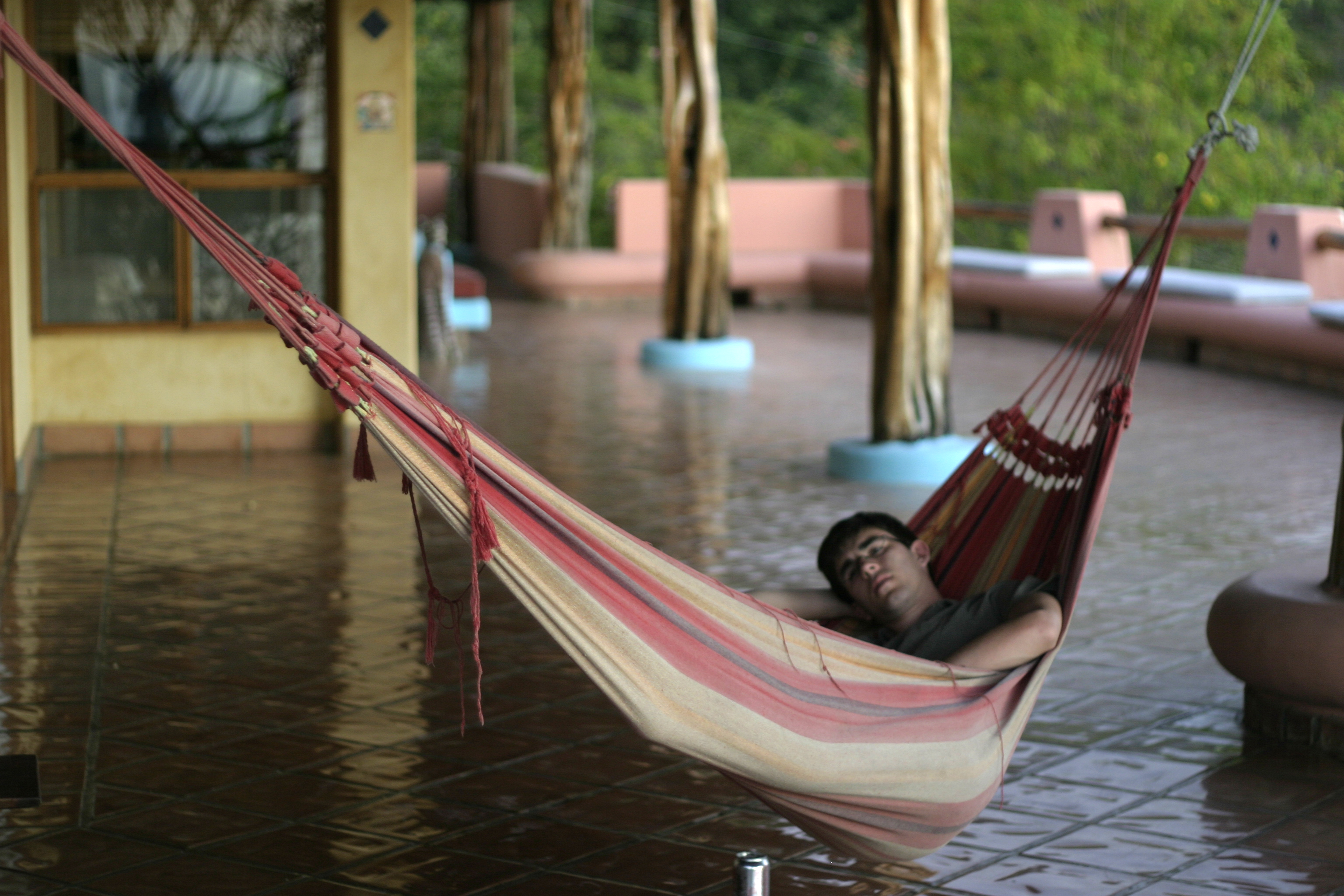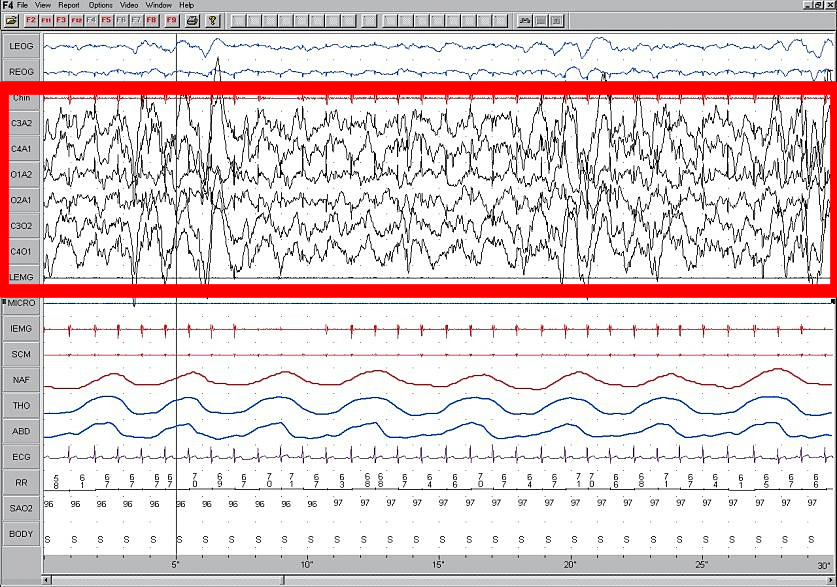|
Nap
A nap is a short period of sleep, typically taken during daytime hours as an adjunct to the usual nocturnal sleep period. Naps are most often taken as a response to drowsiness during waking hours. A nap is a form of biphasic or polyphasic sleep, where the latter terms also include longer periods of sleep in addition to one single period. For years, scientists have been investigating the benefits of napping, including the 30-minute nap as well as sleep durations of 1–2 hours. Performance across a wide range of cognitive processes has been tested. Benefits Sara Mednick conducted a study experimenting on the effects of napping, caffeine, and a placebo. Her results showed that a 60–90-minute nap is more effective than caffeine in memory and cognition. Power nap A power nap, also known as a Stage 2 nap, is a short slumber of 20 minutes or less which terminates before the occurrence of deep slow-wave sleep, intended to quickly revitalize the napper. The power nap is meant to ... [...More Info...] [...Related Items...] OR: [Wikipedia] [Google] [Baidu] |
Power Nap
A power nap or cat nap is a short sleep that terminates before deep sleep (slow-wave sleep; SWS). A power nap is intended to quickly revitalize the sleeper. Cornell University social psychologist James Maas coined the term. A power nap combined with consuming caffeine is called a stimulant nap, coffee nap, caffeine nap, or nappuccino. Characteristics A power nap, also known as a Stage 2 nap, is a short slumber of 20 minutes or less which terminates before the occurrence of deep slow-wave sleep, intended to quickly revitalize the napper. The expression "power nap" was coined by Cornell University social psychologist James Maas. The 20-minute nap increases alertness and motor skills. Various durations may be recommended for power naps, which are short compared to regular sleep. The short duration prevents nappers from sleeping so long that they enter the slow wave portion of the normal sleep cycle without being able to complete the cycle. Entering deep, slow-wave sleep and failin ... [...More Info...] [...Related Items...] OR: [Wikipedia] [Google] [Baidu] |
Biphasic And Polyphasic Sleep
Biphasic sleep (or ''diphasic'', ''bifurcated'', or bimodal sleep) is the practice of sleeping during two periods over the course of 24 hours, while polyphasic sleep refers to sleeping multiple times—usually more than two. Each of these is in contrast to monophasic sleep, which is one period of sleep within 24 hours. Segmented sleep and divided sleep may refer to polyphasic or biphasic sleep, but may also refer to ''interrupted sleep'', where the sleep has one or several shorter periods of wakefulness, as was the norm for night sleep in pre-industrial societies. A common form of biphasic or polyphasic sleep includes a nap, which is a short period of sleep, typically taken between the hours of 9 am and 9 pm as an adjunct to the usual nocturnal sleep period. Napping behaviour during daytime hours is the simplest form of polyphasic sleep, especially when the nap(s) are taken on a daily basis. The term ''polyphasic sleep'' was first used in the early 20th century by psych ... [...More Info...] [...Related Items...] OR: [Wikipedia] [Google] [Baidu] |
Siesta
A ''siesta'' (from Spanish, pronounced and meaning "nap") is a short nap taken in the early afternoon, often after the midday meal. Such a period of sleep is a common tradition in some countries, particularly those in warm-weather zones. The "siesta" can refer to the nap itself, or more generally to a period of the day, generally between 2 and 5 PM. This period is used for sleep, as well as leisure, mid-day meals, or other activities. Siestas are historically common throughout the Mediterranean and Southern Europe, the Middle East, mainland China, and the Indian subcontinent. In Southern Italy the siesta is called ''controra'' (from contro ("counter") + ora "hour"), that is believed as a magical moment of the day, in which the world comes back in possession of ghosts and spirits. The siesta is an old tradition in Spain and, through Spanish influence, most of Latin America. In Dalmatia (coastal Croatia), the traditional afternoon nap is known as ''pižolot'' (from Venetian ''p ... [...More Info...] [...Related Items...] OR: [Wikipedia] [Google] [Baidu] |
Narcolepsy
Narcolepsy is a long-term neurological disorder that involves a decreased ability to regulate sleep–wake cycles. Symptoms often include periods of excessive daytime sleepiness and brief involuntary sleep episodes. About 70% of those affected also experience episodes of sudden loss of muscle strength, known as cataplexy. Narcolepsy paired with cataplexy is evidenced to be an autoimmune disorder. These experiences of cataplexy can be brought on by strong emotions. Less commonly, there may be vivid hallucinations or an inability to move (sleep paralysis) while falling asleep or waking up. People with narcolepsy tend to sleep about the same number of hours per day as people without, but the quality of sleep tends to be lessened. Narcolepsy is a clinical syndrome of hypothalamic disorder, however, the exact cause of narcolepsy is unknown, with potentially several causes. In up to 10% of cases, there is a family history of the disorder. Often, those affected have low levels o ... [...More Info...] [...Related Items...] OR: [Wikipedia] [Google] [Baidu] |
Slow-wave Sleep
Slow-wave sleep (SWS), often referred to as deep sleep, consists of stage three of non-rapid eye movement sleep. It usually lasts between 70 and 90 minutes and takes place during the first hours of the night. Initially, SWS consisted of both Stage 3, which has 20–50 percent delta wave activity, and Stage 4, which has more than 50 percent delta wave activity. Overview This period of sleep is called slow-wave sleep because the EEG activity is synchronized, characterised by slow waves with a frequency range of 0.5–4.5 Hz, relatively high amplitude power with peak-to-peak amplitude greater than 75µV. The first section of the wave signifies a "down state", an inhibition or hyperpolarizing phase in which the neurons in the neocortex are silent. This is the period when the neocortical neurons are able to rest. The second section of the wave signifies an "up state", an excitation or depolarizing phase in which the neurons fire briefly at a high rate. The principal character ... [...More Info...] [...Related Items...] OR: [Wikipedia] [Google] [Baidu] |
Sleep
Sleep is a sedentary state of mind and body. It is characterized by altered consciousness, relatively inhibited Perception, sensory activity, reduced muscle activity and reduced interactions with surroundings. It is distinguished from wakefulness by a decreased ability to react to stimulus (physiology), stimuli, but more reactive than a coma or disorders of consciousness, with sleep displaying different, active brain patterns. Sleep occurs in sleep cycle, repeating periods, in which the body alternates between two distinct modes: REM sleep and non-rapid eye movement sleep, non-REM sleep. Although REM stands for "rapid eye movement", this mode of sleep has many other aspects, including virtual paralysis of the body. dream, Dreams are a succession of images, ideas, emotions, and sensations that usually occur involuntarily in the mind during certain stages of sleep. During sleep, most of the human body, body's systems are in an anabolic state, helping to restore the Immunity (medi ... [...More Info...] [...Related Items...] OR: [Wikipedia] [Google] [Baidu] |
Hypersomnia
Hypersomnia is a neurological disorder of excessive time spent sleeping or excessive sleepiness. It can have many possible causes (such as seasonal affective disorder) and can cause distress and problems with functioning. In the fifth edition of the '' Diagnostic and Statistical Manual of Mental Disorders'' (DSM-5), hypersomnolence, of which there are several subtypes, appears under sleep-wake disorders. Hypersomnia is a pathological state characterized by a lack of alertness during the waking episodes of the day.American Academy of Sleep Medicine. The international classification of sleep disorders: diagnostic & coding manual (2nd ed). Westchester, IL: American Academy of Sleep Medicine, 2005. It is not to be confused with fatigue, which is a normal physiological state. Daytime sleepiness appears most commonly during situations where little interaction is needed. Since the patients’ attention levels ( wakefulness) are impaired, their quality of life may be impacted as well ... [...More Info...] [...Related Items...] OR: [Wikipedia] [Google] [Baidu] |
Excessive Daytime Sleepiness
Excessive daytime sleepiness (EDS) is characterized by persistent sleepiness and often a general lack of energy, even during the day after apparently adequate or even prolonged nighttime sleep. EDS can be considered as a broad condition encompassing several sleep disorders where increased sleep is a symptom, or as a symptom of another underlying disorder like narcolepsy, circadian rhythm sleep disorder, sleep apnea or idiopathic hypersomnia. Some persons with EDS, including those with hypersomnias like narcolepsy and idiopathic hypersomnia, are compelled to nap repeatedly during the day; fighting off increasingly strong urges to sleep during inappropriate times such as while driving, while at work, during a meal, or in conversations. As the compulsion to sleep intensifies, the ability to complete tasks sharply diminishes, often mimicking the appearance of intoxication. During occasional unique and/or stimulating circumstances, a person with EDS can sometimes remain animated, aw ... [...More Info...] [...Related Items...] OR: [Wikipedia] [Google] [Baidu] |
The Boston Globe
''The Boston Globe'' is an American daily newspaper founded and based in Boston, Massachusetts. The newspaper has won a total of 27 Pulitzer Prizes, and has a total circulation of close to 300,000 print and digital subscribers. ''The Boston Globe'' is the oldest and largest daily newspaper in Boston. Founded in 1872, the paper was mainly controlled by Irish Catholic interests before being sold to Charles H. Taylor and his family. After being privately held until 1973, it was sold to ''The New York Times'' in 1993 for $1.1billion, making it one of the most expensive print purchases in U.S. history. The newspaper was purchased in 2013 by Boston Red Sox and Liverpool owner John W. Henry for $70million from The New York Times Company, having lost over 90% of its value in 20 years. The newspaper has been noted as "one of the nation's most prestigious papers." In 1967, ''The Boston Globe'' became the first major paper in the U.S. to come out against the Vietnam War. The paper's 20 ... [...More Info...] [...Related Items...] OR: [Wikipedia] [Google] [Baidu] |
Hammock Nap On Patio
A hammock (from Spanish , borrowed from Taíno and Arawak ) is a sling made of fabric, rope, or netting, suspended between two or more points, used for swinging, sleeping, or resting. It normally consists of one or more cloth panels, or a woven network of twine or thin rope stretched with ropes between two firm anchor points such as trees or posts. Hammocks were developed by native inhabitants of the Americas for sleeping, as well as the English. Later, they were used aboard ships by sailors to enable comfort and maximize available space, by explorers or soldiers travelling in wooded regions and eventually by parents in the early 1920s for containing babies just learning to crawl. Today they are popular around the world for relaxation; they are also used as a lightweight bed on camping trips. The hammock is often seen as a symbol of summer, leisure, relaxation and simple, easy living. Etymology The word ''hammock'' comes, via Spanish, from a Taíno culture Arawakan word me ... [...More Info...] [...Related Items...] OR: [Wikipedia] [Google] [Baidu] |
Somnolence
Somnolence (alternatively sleepiness or drowsiness) is a state of strong desire for sleep, or sleeping for unusually long periods (compare hypersomnia). It has distinct meanings and causes. It can refer to the usual state preceding falling asleep, the condition of being in a drowsy state due to circadian rhythm disorders, or a symptom of other health problems. It can be accompanied by lethargy, weakness and lack of mental agility. Somnolence is often viewed as a symptom rather than a disorder by itself. However, the concept of somnolence recurring at certain times for certain reasons constitutes various disorders, such as excessive daytime sleepiness, shift work sleep disorder, and others; and there are medical codes for somnolence as viewed as a disorder. Sleepiness can be dangerous when performing tasks that require constant concentration, such as driving a vehicle. When a person is sufficiently fatigued, microsleeps may be experienced. In individuals deprived of sleep, somnol ... [...More Info...] [...Related Items...] OR: [Wikipedia] [Google] [Baidu] |






